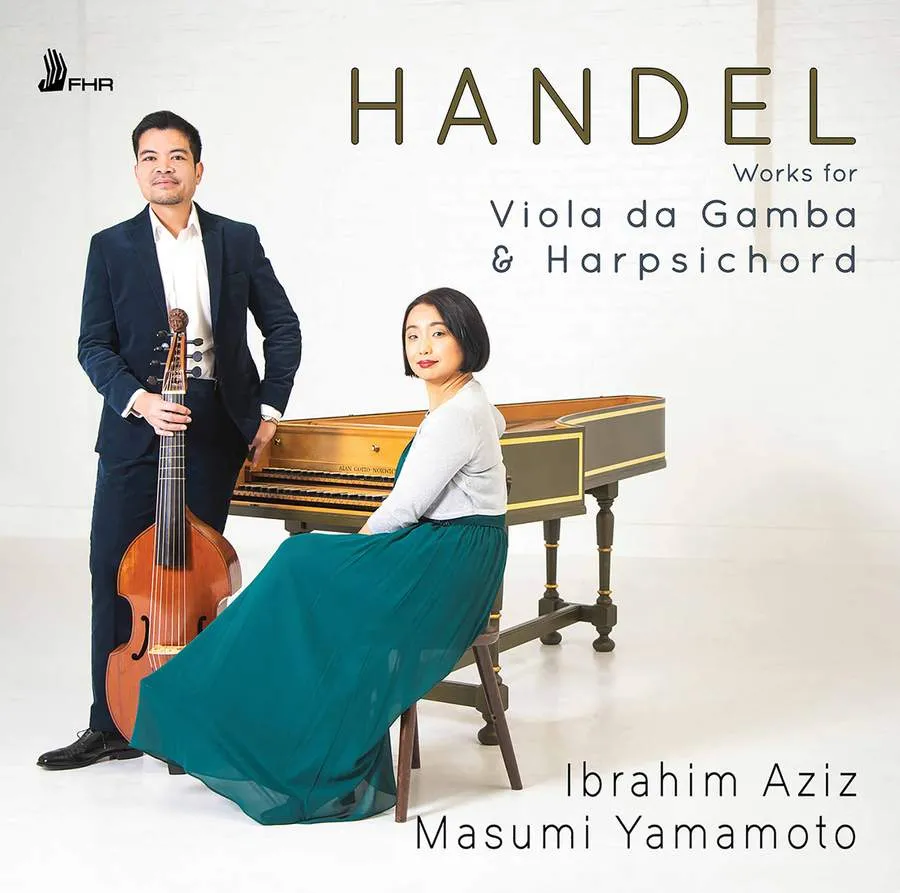
Handel Sonata in G minor, HWV 364b; Sonata in A major, HWV 372, Op. 1 No. 14; Viola da gamba Sonata in D major; Keyboard Suite, HWV 429 in E minor; Keyboard Suite, HWV 437 in D minor; Suite in D minor, HWV 448; Sonata in C major Ibrahim Aziz (viola da gamba), Masumi Yamamoto (harpsichord) First Hand Records FHR91 77:26 mins
This selection of pieces reflects the trend for 18th-century viol players to borrow and adapt music written for the newer, flashier violin. Indeed, Handel himself indicated that his G minor Violin Sonata HWV 364 could also be played on the viola da gamba, as it is here. The transcription may lack the brilliance of the more familiar version, but it gains in sonorousness, and Ibrahim Aziz and Masumi Yamamoto give the music a majestic sweep.
The disc also includes several sonatas tentatively attributed to Handel: the A major Violin Sonata HWV 372, transposed down a tone to suit the tuning of the viol, as well as an ingenuous pair of sonatas, in C and D major, thought to be youthful works. If they are by Handel, they’re not his finest inspirations, and these ponderous accounts tend to plod rather than soar.
Far more successful are the performances of the two suites on the disc: Aziz and Yamamoto capture the fusion of vigour and melancholy of the D minor work (adapted from the Keyboard Suite HWV 448), while Yamamoto’s reading of the E minor work for solo harpsichord, in a version ‘improved’ by Gottlieb Muffat (revealing much about contemporary performance practice) brings together rigorous fugal playing, graceful embellishments and wistful lyricism. Lovely, too, are the ruminative preludes – one transcribed from Handel’s Keyboard Suite HWV 437, the other by his older French contemporary, Sainte Colombe le Fils, who settled in Britain around the same time as Handel himself.
The recorded sound is open and detailed, if lacking a little in warmth.
Kate Bolton-Porciatti